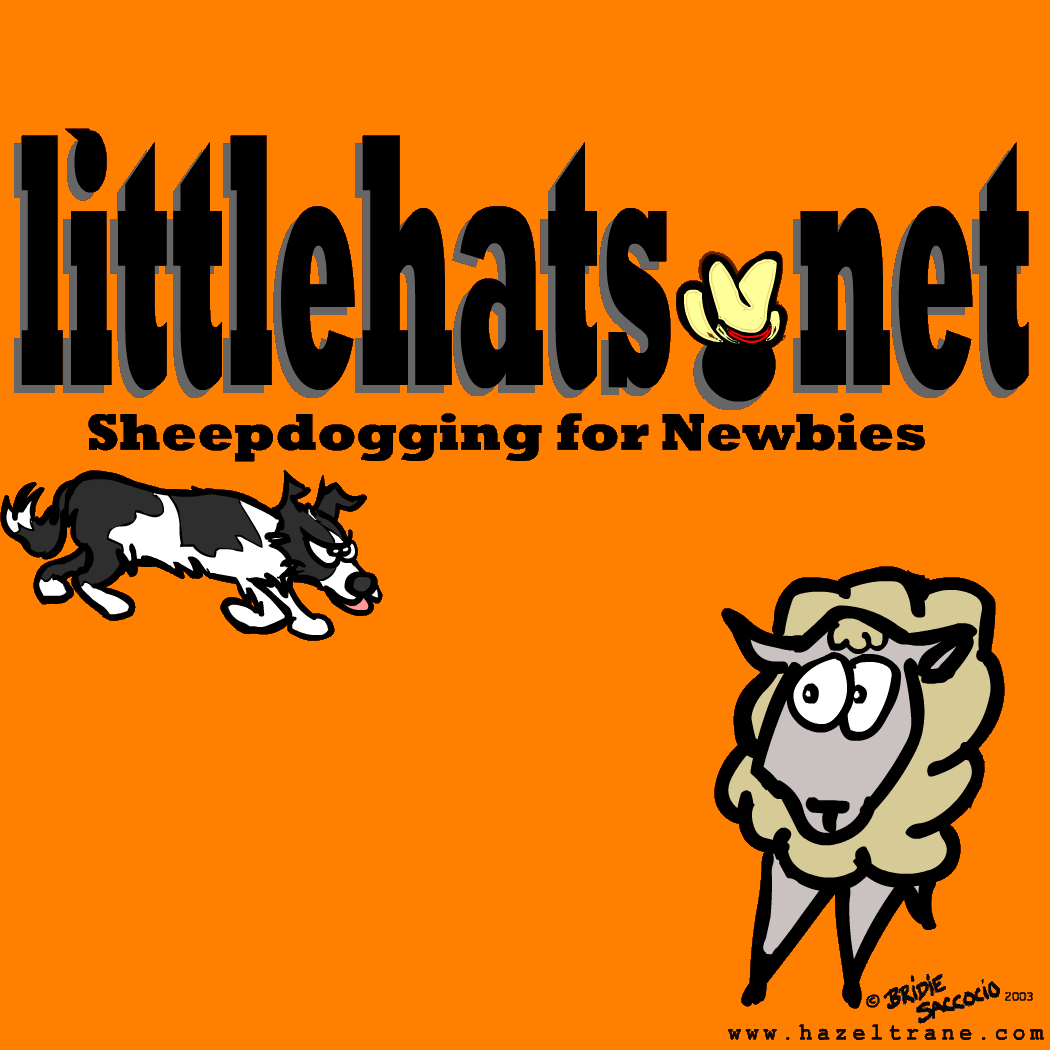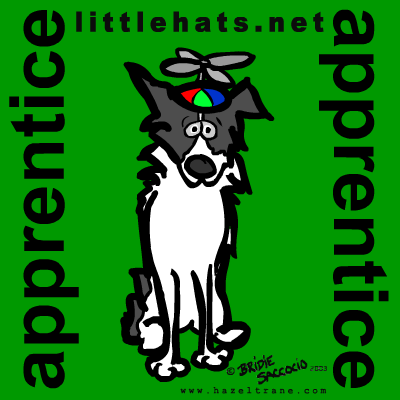


To Grip or Not to Grip
by Patrick Shannahan
Search This Site
One of the most difficult problems many trainers have when starting a dog, or training a dog, is know how to correctly handle a dog gripping. I would say that most people don't really understand why the dog is gripping, and make the problem more difficult to correct in the end.
When I am starting a dog, I know that most dogs don't realize how they are making the stock move. Most of the time it is their physical presence that is making the stock move. Young dogs will likely start out making all kinds of movements and experimenting to see what make stock moves. This might entail rushing the stock, biting the stock or coming to the stocks field of vision. Of course, none of these methods are our preferred method, but at this early point in their training, they usually don't have the necessary methods to move stock correctly.
What I find when people have a dog that grips unnecessarily, is that their timing for the correction is all wrong. Most of the time, they yell at the dog at the moment of impact and quit when the dog has let go. It has taken me a while to learn this, but I have found that dogs that are gripping or biting unnecessarily are committed…and actually can't listen. They are caught up in the moment. When you yell and scream, you are actually adding energy to the dog and you won't get the results you desire. You might think that he hears you yelling "stop that now", but all he hears energy and excitement in your voice.
What results that happen, we won't find desirable. If you are yelling at the dog, and get across your displeasure during the grip, he will likely do one of two things. The first is to run in and grip quickly and get the heck out of there. That way he will keep your yelling to a minimum. The second alternative is to avoid the situation all together and not go in and grip. This lends to be a problem later in his training, as he will avoid situations in which it might be necessary for him to grip to move tough stock. Neither one of these methods are ones that I want my dog to develop for ability and confidence.
I do want my dog to go and confidently grip one day. So I want to communicate to my dog when he is gripping unnecessarily that I do not want that. So what I normally do is try to talk to the dog in a calm voice before and during the grip. I might say their name or "steady" if I think a grip might happen or is happening. At this point, I am actually trying to talk them out of the grip. If they commit themselves and do go in and grip, I wait until the grip is over and then I give them a correction. When the grip is over, their ears and mind are "open" to a correction and it can register in their mind. They are learning at this point as well, that I am not correcting them for gripping, but correcting them for unnecessarily gripping. There is a big difference between them.
Running in and yelling at the dog during a grip seems logical, but when you think about the action, you are actually teaching the dog two different and incorrect methods in that situation. You are teaching him to go and grip quickly, or to not grip at all. Neither one is the method that we want in our dogs. We want a dog that is confident and stands his ground. If he needs to grip to move the stock, we want him to do it with confidence and thoughtfulness, not fear or avoidance.
This of course is for the normal just insignificant grips that most dogs have starting out. If your dog were causing bodily damage to the sheep, I would definitely get in there and stop it. He would then still get the same "correction" for gripping unnecessarily.
My dogs know that I will allow them to grip if the situation arises that they need extra power. They will confident that they won't get in trouble if it is necessary to bite, so they will also appear much more confident to the stock. Hence, they won't need to grip as often as they display more confidence to their stock.
The common solution to gripping for most people is to yell and rush into the dog. My experience has shown me that this will make the situation worse. A well-timed correction after the grip allows the dog the time necessary for him to understand the reason why he is being corrected.
When I am starting a dog, I know that most dogs don't realize how they are making the stock move. Most of the time it is their physical presence that is making the stock move. Young dogs will likely start out making all kinds of movements and experimenting to see what make stock moves. This might entail rushing the stock, biting the stock or coming to the stocks field of vision. Of course, none of these methods are our preferred method, but at this early point in their training, they usually don't have the necessary methods to move stock correctly.
What I find when people have a dog that grips unnecessarily, is that their timing for the correction is all wrong. Most of the time, they yell at the dog at the moment of impact and quit when the dog has let go. It has taken me a while to learn this, but I have found that dogs that are gripping or biting unnecessarily are committed…and actually can't listen. They are caught up in the moment. When you yell and scream, you are actually adding energy to the dog and you won't get the results you desire. You might think that he hears you yelling "stop that now", but all he hears energy and excitement in your voice.
What results that happen, we won't find desirable. If you are yelling at the dog, and get across your displeasure during the grip, he will likely do one of two things. The first is to run in and grip quickly and get the heck out of there. That way he will keep your yelling to a minimum. The second alternative is to avoid the situation all together and not go in and grip. This lends to be a problem later in his training, as he will avoid situations in which it might be necessary for him to grip to move tough stock. Neither one of these methods are ones that I want my dog to develop for ability and confidence.
I do want my dog to go and confidently grip one day. So I want to communicate to my dog when he is gripping unnecessarily that I do not want that. So what I normally do is try to talk to the dog in a calm voice before and during the grip. I might say their name or "steady" if I think a grip might happen or is happening. At this point, I am actually trying to talk them out of the grip. If they commit themselves and do go in and grip, I wait until the grip is over and then I give them a correction. When the grip is over, their ears and mind are "open" to a correction and it can register in their mind. They are learning at this point as well, that I am not correcting them for gripping, but correcting them for unnecessarily gripping. There is a big difference between them.
Running in and yelling at the dog during a grip seems logical, but when you think about the action, you are actually teaching the dog two different and incorrect methods in that situation. You are teaching him to go and grip quickly, or to not grip at all. Neither one is the method that we want in our dogs. We want a dog that is confident and stands his ground. If he needs to grip to move the stock, we want him to do it with confidence and thoughtfulness, not fear or avoidance.
This of course is for the normal just insignificant grips that most dogs have starting out. If your dog were causing bodily damage to the sheep, I would definitely get in there and stop it. He would then still get the same "correction" for gripping unnecessarily.
My dogs know that I will allow them to grip if the situation arises that they need extra power. They will confident that they won't get in trouble if it is necessary to bite, so they will also appear much more confident to the stock. Hence, they won't need to grip as often as they display more confidence to their stock.
The common solution to gripping for most people is to yell and rush into the dog. My experience has shown me that this will make the situation worse. A well-timed correction after the grip allows the dog the time necessary for him to understand the reason why he is being corrected.